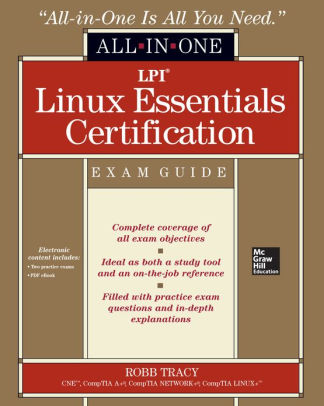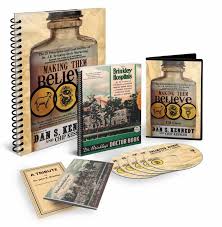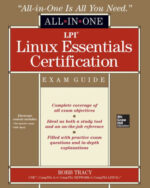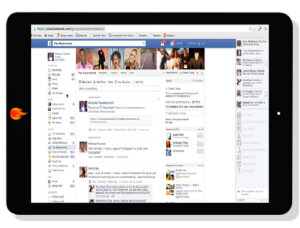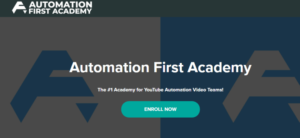(This course is available for immediate delivery) This course will introduce and teach the basic concepts and components of the Linux operating system. The LPI Linux Essentials certification is a great first certification for those looking to make a career in Linux systems administration, or for those that want to expand their IT knowledge.
File size: 3.70GB
Michael Christian – LPI Linux Essentials Certification
Course Details
This course will introduce and teach the basic concepts and components of the Linux operating system. The LPI Linux Essentials certification is a great first certification for those looking to make a career in Linux systems administration, or for those that want to expand their IT knowledge. By the end of this course, you will have learned and been exposed to each of the exam objectives for the LPI LInux Essentials Exam.
Syllabus
Getting Started
Â
About the Author
Â
 00:00:16
Â
Course Introduction
Â
 00:01:04
Â
About the Exam
Â
 00:03:27
1.1 Linux Evolution and Popular Operating Systems
Â
Linux Distributions
Â
 00:09:56
Â
Linux-Embedded Systems
Â
 00:05:11
Â
Linux in the Cloud
Â
 00:07:32
Hands-on Labs are real live environments that put you in a real scenario to practice what you have learned without any other extra charge or account to manage.
Â
Using the Command Line
Â
 00:45:00
1.2 Major Open-Source Applications
Â
Desktop Applications
Â
 00:04:39
Â
Server Applications
Â
 00:10:08
Â
Development Languages
Â
 00:08:47
Â
Package Management Tools and Repositories
Â
 00:09:39
1.3 Open-Source Software and Licensing
Â
The Open Source Philosophy
Â
 00:03:07
Â
Open-Source Licensing
Â
 00:05:41
Â
The Free Software Foundation (FSF) and Open Source Initiative (OSI)
Â
 00:05:32
1.4 ICT Skills and Working in Linux
Â
Desktop Skills
Â
 00:12:38
Â
Getting to the Command Line
Â
 00:07:36
Â
Industry Uses of Linux, Cloud Computing, and Virtualization
Â
 00:06:54
2.1 Command Line Basics
Â
Basic Shell
Â
 00:08:19
Â
Command Line Syntax
Â
 00:06:00
Â
Variables
Â
 00:05:55
Â
Quoting
Â
 00:05:09
Hands-on Labs are real live environments that put you in a real scenario to practice what you have learned without any other extra charge or account to manage.
Â
Command Line Basics
Â
 00:15:00
Hands-on Labs are real live environments that put you in a real scenario to practice what you have learned without any other extra charge or account to manage.
2.2 Using the Command Line to Get Help
Man Pages
 Info Pages
Hands-on Labs are real live environments that put you in a real scenario to practice what you have learned without any other extra charge or account to manage.
Â
Using the Command Line to Get Help
2.3 Using Directories and Listing Files
 Files and Director
Hidden Files and Directories
Home Directories
Absolute and Relative Paths
Hands-on Labs are real live environments that put you in a real scenario to practice what you have learned without any other extra charge or account to manage.
Â
Using Directories and Listing Files
2.4 Creating, Moving, and Deleting Files
Files and Direc
Case Sensitivity
Simple Globbing
Hands-on Labs are real live environments that put you in a real scenario to practice what you have learned without any other extra charge or account to manage.
3.1 Archiving Files on the Command Line
Files and Directories
 Archives and Compression
Hands-on Labs are real live environments that put you in a real scenario to practice what you have learned without any other extra charge or account to manage.
 Archiving Files on the Command Line
3.2 Searching and Extracting Data from Files
 Command Line Pipe
 I/O Redirection
 Basic Regular Expressions
Hands-on Labs are real live environments that put you in a real scenario to practice what you have learned without any other extra charge or account to manage.
 Searching and Finding Data in Files
3.3 Turning Commands into a Script
 Basic Shell Scripting
 Awareness of Common Text Editors (vi and nano)
 Hands-on Labs are real live environments that put you in a real scenario to practice what you have learned without any other extra charge or account to manage.
 Turning Commands Into a Bash Script
 4.1 Choosing an Operating System
 Differences between Windows, OS X, and Linux
Distribution Lifecycle Management
4.2 Understanding Computer Hardware
 Hardware
4.3 Where Data Is Stored
 Programs and Configuration
Processes
 System Messaging
Logging
4.4 Your Computer on the Network
 Internet, Network, and Routers
 Querying DNS Client Configuration
Querying Network Configurations
Here’s What You’ll Get in Michael Christian – LPI Linux Essentials Certification

